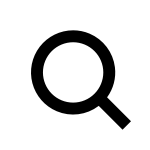Jef Verheyen - Window on Infinity
• 0028 • Espace Découpé - Witte Ruimte, 1957
Jef Verheyen Archive1958:
In February, Verheyen is first in Basel and then in Milan (letters from Jef Verheyen to Ivo Michiels and to Dani Francq mentioning, among other things, the work Verheyen sold to Lucio Fontana [20 February 1958], a blue painting).
Roberto Crippa is in Belgium for the World’s Fair (April). At of Verheyen’s and Ivo Michiels’ request, he places a sculpture in the Belgian pavilion.
In Lausanne, Verheyen’s manifesto, Essentialisme (Essentialism) is accepted for publication in art actuel international, issue 1959 – 13.
Having played an active role in founding the G 58 group in Antwerp (in the Spring of 1958) and taken part in its first exhibitions, Verheyen breaks away from the group after the opening of his first show at the Hessenhuis.
November 1958: first exhibition at the Hessenhuis. Lucio Fontana buys L’air est plein de ta chaleur (The Air is Full of Your Warmth) shown there and in Milan, and gives him what Verheyen describes as a “splendid black-green painting”. In a letter (November) from Italy: “I’m leaving G 58”.
Plans a major international exhibition with Guy Vandenbranden: they invite Piero Manzoni, Lucio Fontana, Yves Klein, Günther Uecker, Engelbert Van Anderlecht, Jozef Peeters and several others to take part.
The exhibition (“Vision in Motion”, March – May 1959) is eventually held at the Hessenhuis, though Verheyen, Piero Manzoni and Lucio Fontana do not take part. Verheyen has his first encounter with Günther Uecker there (“nailed balls”).
Verheyen meets the writer Guy Vaes and moves into a larger studio in his house in Lange Noordstraat.
Works in Milan, where he organises exhibitions with other Belgian artists (October, November, and mid-December 1958; see also Frank Philippi: photo reportage in Milan).
In Milan Verheyen expands his international network. When he exhibits at the Galleria Pater in 1958, Piero Manzoni walks in carrying white paintings. Their encounter further stimulates Verheyen’s musings about monochromy and achromy. It is during this period that he writes his manifesto Essentialisme (Essentialism). His theories are closely related to those of artists such as Günther Uecker, Otto Piene, Hermann Goepfert, Lucio Fontana and Yves Klein. The latter, for example, initially works in achrome white before pursuing his famous blue pigment. In letters, Klein and Verheyen debate the invention and objectives of monochrome and achrome painting.
References
Jef Verheyen, Le peintre flamant / Dirk Pörschmann & Tijs Visser. - Brussels : ASA Publishers, 2010. - 256 p. : ill. ; 23 x 23 cm
Jef Verheyen 'Lux est Lex' / Freddy De Vree. - Wijnegem : Axel Vervoordt, 2004. - 160 p. : ill. ; 35 x 28 cm
Retrospectieve Jef Verheyen, 1932-1984 / Willy Van den Bussche & Léonore Verheyen. - Oostende/Brugge : Provinciaal Museum voor Moderne Kunst/Stichting Kunstboek, 1994. - 158 p. : ill. ; 30 x 24.5 cm
Maurice Besset (ed.), La couleur seule. L'Experience du monochrome, exh. cat., Musée Saint Pierre Art Contemporain Lyon (07.10.1988 - 05.12.1988), Lyon: Octobre/Musée Saint Pierre, 1988. - ill., 32,2 x 25,2 cm

